Hermannia muricata
Hermannia muricata Eckl. & Zeyh.
Family: Malvaceae
Common names: muricate doll’s rose (Eng.); poprosie, klokkiesbos (Afr.)
Introduction
The muricate doll’s rose is a low growing, dainty and cheerful addition to the garden that can brighten up any rockery or mixed border.
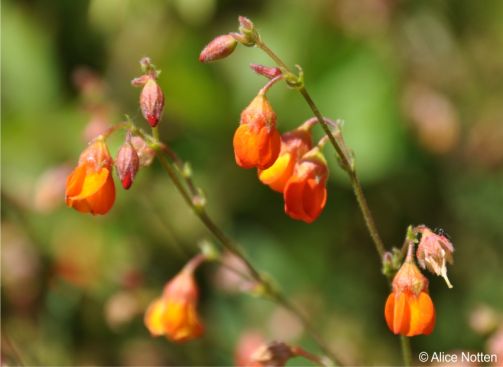
Description
Description
Hermannia muricata is a low growing shrublet, growing to a height of 0.2–0.5 m. It has many slender branches growing from the base and most parts of the plant are covered with fine bristle-like hairs. Its leaves are narrowly oblong and slightly toothed, with a rounded base and slightly recurved margins. Underneath the leaves, the recurved margins form a narrow dark rim around the white, hairy undersurface. Bright, showy, orange flowers appear in winter, spring and early summer (from June to November) but can be seen flowering at other times of the year as well.
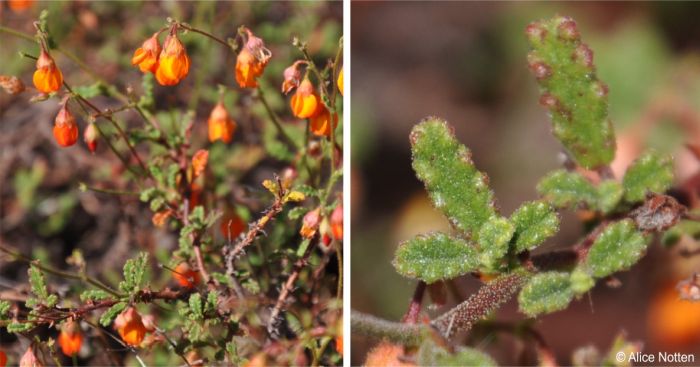
Conservation Status
Status
According to the Red List of South African plants, this species is not threatened and has a conservation status of Least Concern (LC).
Distribution and habitat
Distribution description
Hermannia muricata is endemic to South Africa, and is found growing on dry clay and granite slopes in the Eastern Cape, Northern Cape and Western Cape, from Namaqualand and the southern Karoo to the Olifants and Hex River Valleys and eastward to George and Uniondale. It therefore experiences a winter rainfall in the Western Cape and a summer rainfall in the Eastern Cape and Northern Cape. Temperatures experienced can be above 30°C in Summer to below 10°C in Winter. It occurs in 3 different biomes, namely Fynbos, Nama Karoo and Succulent Karoo.
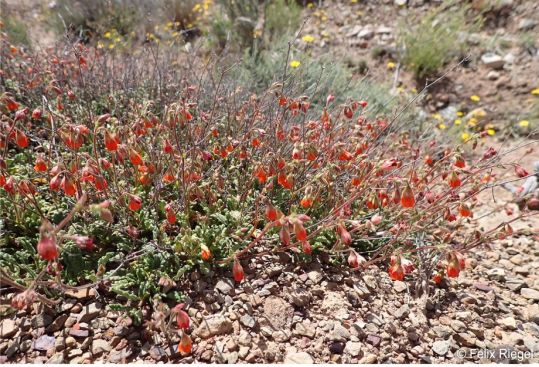
Derivation of name and historical aspects
History
The genus Hermannia, is named after Paul Hermann (1640–1695), a German professor of Botany at Leyden. He was one of the first travelers and plant collectors at the Cape. The species name muricata, is derived from the Latin murex, which means ‘roughened, with hard points’, like the shell of the mollusc, Murex, from which the celebrated purple dye of antiquity was obtained. This possibly refers to the tubercle-based bristles on the branches and most parts of the plant in the type specimen. The common name doll’s rose (poprosie in Afrikaans), refers to the miniature flowers, while klokkiesbos (little bells bush) refers to their shape.
There are around 120 species of Hermannia, which consists of herbs and subshrubs, with 36 species distributed in the Western Cape. Hermannia belongs to the family Malvaceae, which includes the hibiscus and jute families. This family is widely distributed in temperate and tropical regions. Noteworthy members of the Malvaceae are Gossypium, the cotton plant and Theobroma cacao, the cocoa tree, from South America, which are of great economic importance.
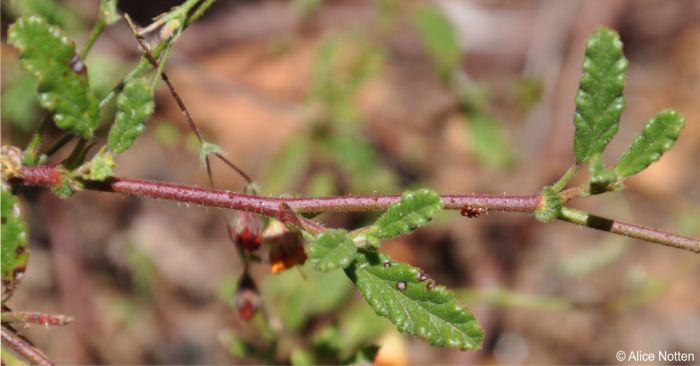
Ecology
Ecology
Hermannias have strong, thick, rootstocks and underground stems, which enable them to withstand fires and to overcome times of severe drought in arid areas. They are mostly very palatable to stock and small game, and are generally heavily grazed. The presence of some species are an indication of good veld.
Uses
Use
Some members of the genus Hermannia are given the common name of pleisterbos (plaster bush). This refers to their healing properties and the way the leaves are rubbed together to form a sticky mass which is used as a healing plaster for sores, cuts and other such injuries. However, there are no known medicinal uses of Hermannia muricata.

Growing Hermannia muricata
Grow
To propagate Hermannia muricata, make stem cuttings. Remove all flower buds and most of the leaves, leaving one or two leaves on the top of the cutting. The cutting should have 3 or more nodes along the stem and be cut below the bottom node and above the top node. Dip the bottom node of the cutting in a suitable rooting hormone and strike the cuttings in a tray with a 1:1 mix of sifted bark and perlite.
Place the cuttings on a heated bench with overhead misting. While waiting for the cuttings to root, the rooting medium needs to be kept moist but not overwatered and the leaves should have a fine film of water on the upper surface to help reduce moisture loss. After three to four weeks, once the cuttings have rooted, remove them from the misting bench and place them in a semi-shaded area where they will harden off for a week or two. While hardening off, they will need to be watered a couple of times a day but it depends on the moisture of the medium. After hardening off, pot the cuttings into an appropriate sized pot or bag in a potting medium, and allow them to grow until they are a suitable size to be planted into the garden. Place the newly potted plants in a sunny area and water them daily or every 2 days, depending on their needs.
Once large enough and well rooted enough, Hermannia muricata can be planted into a sunny spot in the garden. It will do well in rockeries or mixed border plantings.
References
- Goldblatt, P. & Manning, J. 2000. Cape Plants. A conspectus of the Cape flora of South Africa. Strelitzia 9. National Botanical Institute, Pretoria & Missouri Botanical Garden, Missouri.
- Jackson, W.P.U. 1990. Origins and meanings of names of South African plant genera. University of Cape Town Printing Department, Cape Town.
- Raimondo, D., Von Staden, L., Foden, W., Victor, J.E., Helme, N.A., Turner, R.C., Kamundi, D.A. & Manyama, P.A. (eds) 2009. Red list of South African plants. Strelitzia 25. South African National Biodiversity Institute, Pretoria.
- Riegel, F. 2021-Oct. Observation of Hermannia muricata. iNaturalist. Online. https://www.inaturalist.org/observations/115361907.
- Sachse, B. 2007. Hermannia L. (Malvaceae). PlantZAfrica. Online. http://pza.sanbi.org/hermannia.
- Smith, C.A. 1966. Common names of South African plants. Memoirs of the Botanical Survey of South Africa No. 35. Government Printer, Pretoria.
- Stearn, W.T. 1992. Stearn’s Dictionary of Plant Names for gardeners. A handbook on the origin and meaning of the botanical names of some cultivated plants. Cassell, UK.
- Trinder-Smith, T.H. 2003. The Levyns Guide to the plant genera of the south western Cape. Bolus Herbarium, UCT, Red Roof Design CC, Cape Town
- Van Rooyen, G. & Steyn, H. 1999. Cederberg Clanwilliam & Biedouw Valley South African wildflower guide 10. Botanical Society of South Africa, Cape Town.
- Verdoorn, I.C. 1980. Revision of Hermannia subgenus Hermannia in southern Africa. Bothalia 13(1): 1–63.
Credits
Karen Wall
Kirstenbosch National Botanical Garden
April 2025
Acknowledgements: images by Alice Notten and Felx Riegel.
Plant Attributes:
Plant Type: Shrub
SA Distribution: Eastern Cape, Northern Cape, Western Cape
Soil type: Sandy, Clay, Loam
Flowering season: Spring, Early Summer, Winter
PH: Acid
Flower colour: Orange
Aspect: Full Sun, Afternoon Sun (Semi Shade)
Gardening skill: Average
Special Features:
Horticultural zones
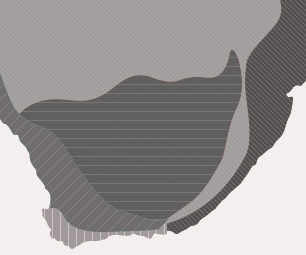










Rate this article
Article well written and informative
Rate this plant
Is this an interesting plant?
Login to add your Comment
Back to topNot registered yet? Click here to register.